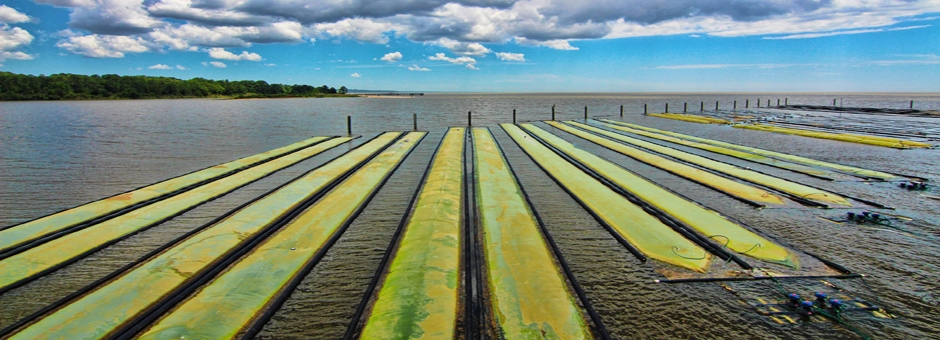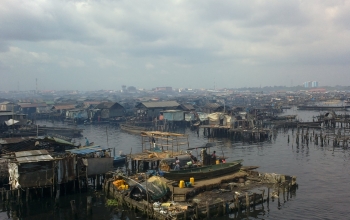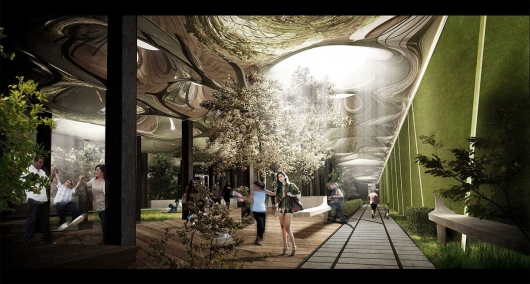Buckminster Fuller Challenge

The annual Buckminster Fuller Challenge Finalists were announced on September 28, 2015.
THE 2015 FULLER CHALLENGE FINALISTS
September 28, 2015, New York City – The Buckminster Fuller Institute is pleased to announce the Finalists for the 2015 Fuller Challenge. These six Finalists were selected among over 400 entries and have reached the final deliberation phase, in which a winner will be selected to receive a $100,000 grand prize toward the implementation of their work.
The six proposals now under consideration for the 2015 grand prize have undergone a rigorous, multi-stage review process for adherence to the Challenge’s entry criteria by the members of the Challenge Review Committee, including targeted analysis and evaluation by a diverse group of Senior Advisors, experts in their fields. Detailed information about each project and associated images can be viewed here.
ALGAE SYSTEMS
“Design science is more than the application of engineering and technology. It is more than a plan or a design. Design science means the total responsibility and capability for development, production, and distribution – of not just a product – but a total service system on a worldwide basis.” –R. Buckminster Fuller
Inspired by Buckminster Fuller’s assertion that “pollution is nothing but resources we’re not harvesting,” Algae Systems uses a closed-loop, systemic approach to generate value from wastewater, providing a crucial, economically and environmentally sustainable service.
 Algae Systems integrates a suite of technologies into a process that grows native algae species to provide cost-effective wastewater treatment, removing CO2 from the atmosphere and yielding only clean water, carbon-negative bio-fuels, and fertilizers as its end products. The process is currently demonstrated at commercial scale in Daphne, Alabama and is in negotiation for deployment in Jamaica, Brazil, Mexico, and Honduras, with goals to disseminate the service worldwide.
Algae Systems integrates a suite of technologies into a process that grows native algae species to provide cost-effective wastewater treatment, removing CO2 from the atmosphere and yielding only clean water, carbon-negative bio-fuels, and fertilizers as its end products. The process is currently demonstrated at commercial scale in Daphne, Alabama and is in negotiation for deployment in Jamaica, Brazil, Mexico, and Honduras, with goals to disseminate the service worldwide.
COMMUNITY ARCHITECTS NETWORK
“We are called to be architects of the future, not its victims. [The challenge is] to make the world work for 100% of humanity in the shortest possible time, with spontaneous cooperation and without ecological damage or disadvantage of anyone.” -R. Buckminster Fuller
The Community Architects Network (CAN) operates by their motto: “Let the people be the solution,” seeking to empower people throughout Asia to become the designers of their own development. Founded in 2010, CAN is a network of architects, planners, builders, engineers, lecturers, and volunteers collectively building community-driven processes of participatory design, planning, and development in 19 countries, so far. CAN sustains and amplifies a paradigm shift toward participatory design and planning by bridging the divide between “experts” and local people. Over the years, CAN has systemically disseminated useful techniques for participatory design including surveying, mapping, financial planning, and construction management. CAN has evolved the capacity to legitimize local knowledge and drive community-led solutions in the face of heavily restrictive policy regulations, institutionalizing grassroots planning and achieving comprehensive change for communities at various scales.
DRYLANDS RESILIENCE INITIATIVE AND HAZEL
“[Design Science is] the effective application of the principles of science to the conscious design of our total environment in order to help make the Earth’s finite resources meet the needs of all humanity without disrupting the ecological processes of the planet.” -R. Buckminster Fuller
The Drylands Resilience Initiative has produced HAZEL, a powerful digital modeling tool that supports coordinated, scenario-based whole systems thinking and decision-making for water-smart urban design. HAZEL, when completed, will allow stakeholders to evaluate infrastructure, building projects, and their supporting ecosystems using precise data on hydrologic functions. It will allow in-depth, data-based systemic evaluation of urban design choices that couple human and natural systems, measuring hydrologic interactions and feedbacks between these systems at various scales and time horizons. This technology will allow the optimization of the hydrologic function of the built environment, encouraging small-scale distributed water infrastructure that respects cultural and biophysical attributes of communities and watersheds, potentially uncoupling the water-energy nexus.
GREENWAVE
“You never change things by fighting the existing reality. To change something, build a new model that makes the existing model obsolete.” -R. Buckminster Fuller
GreenWave is a non-profit organization working to restore ocean ecosystems and transform fishers, our last ocean hunters, into restorative ocean farmers and stewards of their local waters. Through the scaling and replication of their revolutionary 3D Ocean Farming system, economic and ecological restoration occur hand-in-hand, as highly productive ocean farms create jobs, filter ocean water, and restore biodiversity. With 2 operational farms in New England and 10 more set to open in the next year, GreenWave’s open-source model will allow coastal communities worldwide to adopt their 3D Ocean Farming system.
MAHILA HOUSING SEWA TRUST
“When individuals join in a cooperative venture, the power generated far exceeds what they could have accomplished acting individually.” -R. Buckminster Fuller
Mahila Housing SEWA Trust (MHT) creates a unique socio-technical partnership between communities and stakeholders, integrating traditional knowledge with modern technologies in order to devise multi-layered solutions to climate change impacts for poor urban dwellers.
 Founded on decades of work in sustainable community development and, in particular, women’s empowerment, MHT’s Climate Resiliency Project addresses vulnerability to water stress, flooding, and health risks in urban communities across four states of India. Inspired by Buckminster Fuller’s call to make the world work for 100% of humanity through the application of design science, the project will facilitate dialogue between vulnerable populations, government officials, and technical experts in order to adapt appropriate technologies into local climate change coping mechanisms.
Founded on decades of work in sustainable community development and, in particular, women’s empowerment, MHT’s Climate Resiliency Project addresses vulnerability to water stress, flooding, and health risks in urban communities across four states of India. Inspired by Buckminster Fuller’s call to make the world work for 100% of humanity through the application of design science, the project will facilitate dialogue between vulnerable populations, government officials, and technical experts in order to adapt appropriate technologies into local climate change coping mechanisms.
THE NUBIAN VAULT PROGRAMME
“All of humanity now has the option to “make it” successfully and sustainably, by virtue of our having minds, discovering principles and being able to employ these principles to do more with less.” -R. Buckminster Fuller
The Nubian Vault Programme (AVN), a Fuller Challenge Semi-finalist in 2012 and 2014, has demonstrated a remarkable capacity to adapt and replicate its sustainable housing program, now deployed throughout 5 African countries. Aiming to create comprehensive change in human livelihoods while addressing the critical need for housing across the arid Sahel region of Africa, the program integrates its ecologically sustainable, time-tested Nubian Vault construction technique into local economic circuits, relying entirely on local labor and raw materials, creating autonomous markets for local entrepreneurs, and successfully making a previously unsustainable housing system obsolete.
The annual Buckminster Fuller Challenge attracts a diverse range of creative ideas, such as the concept pictured below, called The Low Line, submitted by James Ramsey and Dan Barasch to the 2012 Challenge, which proposed to use innovative solar technology to create an underground park in an unused former trolley terminal to serve as a unique community space in an under-served NYC neighborhood with little access to green space.
The Fuller Challenge annually puts forth a global call for solutions that address humanity’s most pressing problems, welcoming submissions from all fields. In response to this open call, designers, architects, activists, entrepreneurs, artists, planners, scientists, and other practitioners submit entries that reflect understanding of a whole system context. While the spread of disciplines in the applicant pool varies each year, the Fuller Challenge continues to attract geographically diverse applicants: this year, entries hailed from 136 countries apoteksv.se/.
Buckminster Fuller defined a design scientist as a synthesis of “artist, inventor, mechanic, objective economist, and evolutionary strategist.” The most exemplary entrants to the Challenge, such as the following six Finalists, embody this definition by working across disciplines to present solutions conceived through comprehensive thinking. These Finalists demonstrate intrinsic alignment with Fuller’s call to “make the world work for 100% of humanity, in the shortest possible time, through spontaneous cooperation, without ecological offense or the disadvantage of anyone.”
Now in its 8th cycle, the Fuller Challenge remains the only prize program specifically working to identify, catalyze, and celebrate projects that address various problem spaces through a unique whole system approach. Each year the efforts of the Finalist projects reflect the evolution of the field of “comprehensive, anticipatory, design science” as coined by Buckminster Fuller. The Buckminster Fuller Institute August 26, 2015 press release announced an impressive roster of semi-finalists in the 2015 Buckminster Fuller Challenge.

